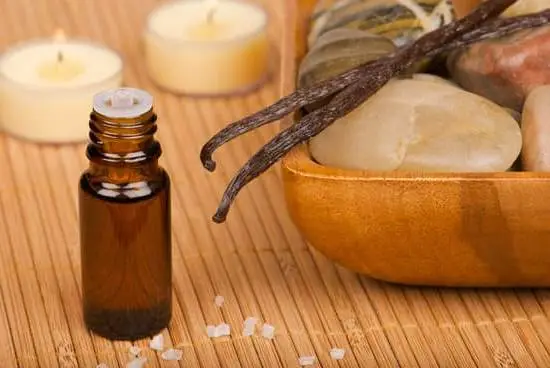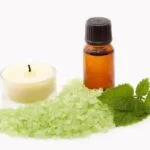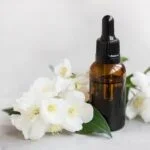When it comes to natural remedies for relaxation and wellness, green tea essential oil aromatherapy has been gaining popularity. This ancient practice has been used for centuries to promote physical and emotional well-being. In this article, we will explore the history, benefits, different ways to use, DIY blends and recipes, scientific evidence, and safety tips of green tea essential oil in aromatherapy.
Green tea essential oil has been traced back to ancient Chinese and Japanese cultures, where it was valued for its medicinal properties. Made from the leaves of the Camellia sinensis plant, this essential oil is known for its soothing and calming effects. As we delve into its historical origins and traditions, we will uncover how green tea essential oil has stood the test of time as a powerful therapeutic tool.
The benefits of green tea essential oil are numerous, ranging from stress relief to improved mental clarity. By exploring its various uses in aromatherapy, such as through diffusers or inhalation techniques, we can better understand how this natural remedy can be incorporated into our daily lives for optimal health and well-being. So join us as we embark on this journey to discover the remarkable power of green tea essential oil in aromatherapy.
History and Origins of Green Tea Essential Oil
The use of green tea for its medicinal and therapeutic properties dates back to ancient China, where it was incorporated into traditional medicine and practices. The origins of green tea essential oil can be traced back to the same time period, with the extraction process of the oil from the leaves of the Camellia sinensis plant being a closely guarded secret.
Origins in Traditional Chinese Medicine
In traditional Chinese medicine, green tea was used to treat various ailments and promote overall well-being. The leaves were infused in hot water to create a healing beverage that was believed to have powerful antioxidant and anti-inflammatory properties. Over time, the oil extracted from these leaves became a valuable commodity for its aromatic and therapeutic qualities.
Historical Significance
The use of green tea essential oil eventually spread beyond China to other parts of Asia, where it became an integral part of aromatherapy practices. Its popularity grew as traders and explorers brought this precious oil to Europe and eventually to the rest of the world. Today, green tea essential oil continues to be highly valued for its soothing and uplifting scent, as well as its numerous health benefits when used in aromatherapy.
Benefits of Green Tea Essential Oil in Aromatherapy
Green tea essential oil has been used for centuries in traditional Chinese medicine for its numerous health benefits. When used in aromatherapy, this essential oil can offer a wide range of benefits for both the mind and body. Some of the key benefits of green tea essential oil in aromatherapy include:
- Stress Relief: The soothing aroma of green tea essential oil can help alleviate feelings of stress and anxiety, promoting relaxation and calmness.
- Improved Mental Clarity: Inhaling the scent of green tea essential oil can help enhance mental alertness and improve focus, making it an excellent choice for studying or working.
- Mood Enhancement: The uplifting properties of green tea essential oil can have a positive impact on mood, helping to lift spirits and promote a sense of well-being.
In addition to these psychological benefits, green tea essential oil also offers a range of physical health benefits when used in aromatherapy, such as:
- Respiratory Support: The inhalation of green tea essential oil vapors may help provide relief from respiratory issues such as congestion and coughing.
- Antioxidant Properties: Green tea essential oil contains potent antioxidants that can help protect the body from oxidative stress and support overall health.
- Skin Care: When used in aromatherapy blends, green tea essential oil’s antibacterial properties can help promote clear, healthy skin and combat blemishes.
These are just a few examples of the many benefits that green tea essential oil can provide when incorporated into aromatherapy practices. Whether you are looking to ease stress, improve mental clarity, or support your physical well-being, this versatile essential oil has much to offer.
Different Ways to Use Green Tea Essential Oil for Aromatherapy (Diffusers, Inhalation, Etc)
Green Tea Essential Oil Aromatherapy offers a wide range of benefits and can be used in various ways to promote health and well-being. In this section, we will explore the different methods for using green tea essential oil in aromatherapy, including diffusers, inhalation, and more.
Diffusion
One popular way to use green tea essential oil in aromatherapy is through diffusion. By adding a few drops of the oil to a diffuser, you can fill your space with the refreshing aroma of green tea. Diffusing green tea essential oil not only creates a pleasant atmosphere but also helps to purify the air in your home or workspace.
Inhalation
Inhalation is another effective method for experiencing the benefits of green tea essential oil aromatherapy. You can inhale the aroma directly from the bottle, or add a few drops to a bowl of hot water and breathe in the steam. This method allows the aromatic compounds in the oil to quickly enter your bloodstream and have a direct impact on your mood and energy levels.
Topical Application
While it is important to dilute essential oils before applying them to the skin, green tea essential oil can be used topically in aromatherapy blends and massage oils. When combined with a carrier oil, such as coconut or jojoba oil, it can be applied to pulse points or massaged into sore muscles for an invigorating experience.
Incorporating these different methods of using green tea essential oil in aromatherapy into your daily routine can help you fully experience the therapeutic benefits of this powerful natural remedy.
DIY Green Tea Essential Oil Aromatherapy Blends and Recipes
Green tea essential oil can be used in a variety of DIY aromatherapy blends and recipes to promote relaxation, reduce stress, and improve overall well-being. Here are some easy and effective ways to incorporate green tea essential oils into your aromatherapy routine:
- Diffuser Blend: Combine 5-7 drops of green tea essential oil with 2-3 drops of lavender essential oil in a diffuser for a calming and uplifting aroma. This blend is perfect for creating a soothing atmosphere at home or in the office.
- Aromatherapy Massage Oil: Add 10-12 drops of green tea essential oil to 1 ounce of carrier oil, such as coconut or sweet almond oil, for a luxurious massage oil. This blend can help ease muscle tension and promote relaxation during massage therapy.
- Room Spray: Create your own refreshing room spray by combining 10-12 drops of green tea essential oil with distilled water in a spray bottle. Use this blend to freshen up any space while also benefiting from the aromatic properties of green tea essential oil.
In addition to these simple DIY blends, there are numerous other recipes that can be customized to suit individual preferences and needs when it comes to green tea essential oil aromatherapy. Whether you prefer floral, citrus, or herbal scents, there is a recipe out there that incorporates green tea essential oil for all types of aromatherapy applications.
Overall, incorporating green tea essential oils into your daily self-care routine through these DIY blends and recipes can have a positive impact on both your physical and mental well-being. The versatility of green tea essential oil allows for endless possibilities when it comes to creating personalized aromatherapy experiences at home or in professional settings.
Scientific Evidence and Studies Supporting the Efficacy of Green Tea Essential Oil in Aromatherapy
Green tea essential oil has been used for centuries, particularly in traditional Chinese and Japanese medicine. It is derived from the leaves of the Camellia sinensis plant, which is also the source of regular green tea. This essential oil is renowned for its therapeutic properties and has gained popularity in aromatherapy due to its numerous health benefits.
Scientific evidence supports the efficacy of green tea essential oil in aromatherapy. Studies have shown that it contains high levels of antioxidants such as polyphenols, which have anti-inflammatory and antimicrobial properties.
A 2012 study published in the Journal of Biological Chemistry found that green tea essential oil can help to reduce stress and anxiety when used in aromatherapy. Another study conducted by the University of Sao Paulo in Brazil discovered that inhaling green tea essential oil can improve cognitive function and memory.
In addition to psychological benefits, research has also shown that green tea essential oil may have physical health benefits. A study published in Frontiers in Microbiology revealed that this essential oil possesses antimicrobial properties against a wide range of bacteria and fungi, making it effective for use in disinfecting air and surfaces during aromatherapy sessions.
| Study | Findings |
|---|---|
| Journal of Biological Chemistry | Green tea essential oil reduces stress and anxiety |
| University of Sao Paulo Study | Inhaling green tea essential oil improves cognitive function and memory |
| Frontiers in Microbiology Research | Antimicrobial properties against bacteria and fungi |
Precautions and Safety Tips for Using Green Tea Essential Oil in Aromatherapy
When using green tea essential oil for aromatherapy, it is important to take certain precautions to ensure a safe and enjoyable experience. While green tea essential oil offers a wide range of benefits, it is potent and should be used with care.
Firstly, it’s crucial to always dilute green tea essential oil before applying it to the skin or using it in a diffuser. Direct contact with undiluted essential oil can cause skin irritation, especially for those with sensitive skin. It is recommended to mix a few drops of green tea essential oil with a carrier oil, such as coconut or jojoba oil, before topical application.
In addition, pregnant women and individuals with certain medical conditions should consult with a healthcare professional before using green tea essential oil for aromatherapy. While there are many benefits associated with the use of this essential oil, there may be specific health considerations that could impact its safety and effectiveness when used in aromatherapy.
Another tip for safe and effective use of green tea essential oil in aromatherapy is to conduct a patch test before widespread use. This entails applying a small amount of diluted essential oil to a small area of skin and monitoring for any adverse reactions over the next 24 hours. This simple step can help identify any potential sensitivity or allergic reaction before using the essential oil more extensively.
Overall, incorporating green tea essential oil into an aromatherapy practice can be both beneficial and enjoyable when approached with caution and respect for its potency. By following these precautions and safety tips, individuals can fully enjoy the therapeutic properties of green tea essential oil while minimizing any potential risks.
| Precautions | Safety Tips |
|---|---|
| Always dilute the essential oil | Consult healthcare professional if pregnant or have medical conditions |
| Conduct a patch test before widespread use | Avoid direct contact with undiluted essential oils |
Conclusion
In conclusion, it is clear that green tea essential oil aromatherapy offers a wide range of benefits for both physical and mental well-being. With its rich history and origins dating back centuries, this natural remedy has been used in different cultures around the world to promote relaxation, relieve stress, and improve overall health. The numerous scientific studies supporting the efficacy of green tea essential oil in aromatherapy further validate its use as a powerful tool for holistic healing.
The various ways to use green tea essential oil in aromatherapy, including diffusion, inhalation, and DIY blends and recipes, provide individuals with flexibility in incorporating this natural remedy into their wellness routine. It is important to note the precautions and safety tips when using green tea essential oil to ensure that one reaps the full benefits without any adverse effects.
Overall, green tea essential oil aromatherapy stands out as an effective and accessible natural remedy for promoting relaxation, reducing stress, improving focus, and uplifting mood. Whether it is used alone or in combination with other essential oils or techniques, its versatility makes it a valuable addition to anyone’s self-care regime.
As more people embrace the holistic approach to health and wellness, green tea essential oil aromatherapy has emerged as a popular choice for those seeking natural solutions for achieving balance and well-being.
Frequently Asked Questions
What Does Green Tea Essential Oil Do?
Green tea essential oil is known for its calming and relaxing properties. It can help reduce stress, anxiety, and even improve focus and concentration. Additionally, it has anti-inflammatory and antioxidant properties that can benefit the skin when used in skincare products.
What Are the Benefits of Green Tea Aroma?
The benefits of green tea aroma include its ability to uplift the mood, reduce stress, and promote relaxation. The scent of green tea is often associated with feeling refreshed and invigorated, making it an ideal aroma for aromatherapy or as a natural air freshener.
What Essential Oils Blend Well With Green Tea?
Several essential oils blend well with green tea, including citrus oils like bergamot and lemon which can enhance its uplifting properties. Floral oils like jasmine or rose can complement the soothing effects of green tea, while woody scents like cedarwood or sandalwood can add depth to the aroma.

Are you looking for a natural way to improve your health and wellbeing?
If so, aromatherapy may be the answer for you.





